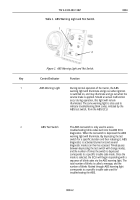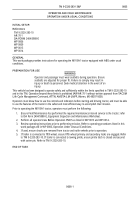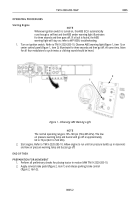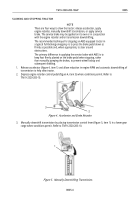TM-9-2320-283-13-P - Page 48 of 400
TM 9-2320-283-13&P
0006
0006-2
UNUSUAL ENVIRONMENT/WEATHER – CONTINUED
NOTE
The recommended technique for stopping an ABS equipped tractor in
a typical panic stop is to press the brake pedal down as firmly as
possible and, where appropriate, to steer around obstructions.
1.
If pulling a trailer, ensure trailer air brakes are connected to tractor and are operating properly. Refer to
TM 9-2320-283-10.
2.
Drive at slower speeds and maintain at least double the normal distance from vehicles ahead.
3.
Avoid sudden braking which may increase the possibility of skidding or jackknifing tractor.
4.
After driving through standing water or slush, drive slowly and test service brakes by maintaining
moderate pressure on service brake pedal (figure 1, item 2).
1
2
Figure 1. Testing Wet Service Brakes.
CAUTION
Never move inter-axle differential control to LOCK position while
tractor is moving or any wheel is spinning. Failure to comply may
result in damage to equipment.
5.
If operating on a difficult stretch of road, stop and inspect surface of road before driving on it. Select
transmission gear range that is suited to road conditions, and engage inter-axle differential lock. Refer to
TM 9-2320-283-10.
WARNING
Do not use engine retarder on slippery road surfaces. Using engine
retarder on wet, icy, or snow-covered roads may result in loss of
vehicle control. Failure to comply may result in damage to equipment
or possible injury or death to personnel. Seek medical attention in the
event of an injury.
Never down-shift to a gear range lower than the tractor road speed on
slippery pavement; the force of a sudden increase in engine rpm
through the transmission may cause the drive wheels to lose traction
and result in a loss of control of tractor and jackknifing of trailer.
Failure to comply may result in damage to equipment or possible
injury or death to personnel. Seek medical attention in the event of an
injury.
Back to Top




















